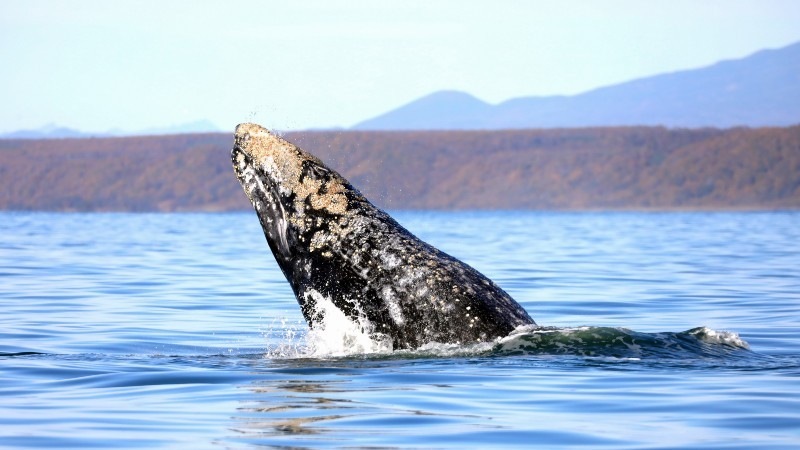
The Kronotsky State Reserve in Russia has unveiled promising results from its 2025 research season, focusing on the critically endangered Okhotsk-west Pacific population of gray whales. These ancient marine mammals utilize the protected waters of the northern Kronotsky Bay as a vital feeding ground, and the latest findings offer a significant glimmer of hope for their future. Over eight months of intensive fieldwork, biologists successfully identified 151 individual whales, contributing to a four-year catalog that now encompasses data on 268 distinct animals observed off the Kamchatka coast. This dedicated monitoring provides invaluable insights into one of the world’s most vulnerable whale populations.
What makes these gray whales particularly unique is their specialized diet; they are the only baleen whales adapted to feed on benthos – organisms living on the seafloor. To understand the health of their primary food source, scientists diligently collected sediment samples throughout the season, with laboratory analyses eagerly awaited. Simultaneously, researchers assessed the physical condition of the whales, noting with satisfaction that even young calves, recently weaned and transitioning to independent feeding, exhibited robust health and good fat reserves. This positive indicator underscores the success of the foraging grounds within the reserve and the overall health of the marine ecosystem supporting these magnificent creatures.
Despite challenging weather conditions that frequently impacted scheduling and limited sea excursions, the scientific team persevered, completing 39 boat trips between May and October. Crucially, visual observations from the shore commenced much earlier, with the first two females spotted in mid-March. This early appearance has led scientists to hypothesize that some whales, particularly those that gave birth the previous summer, might be overwintering directly off the peninsula’s coast, as individuals have occasionally been recorded in the bay as late as December and January, deepening our understanding of their migratory patterns and resilience.
Even after the main navigation season concludes, continuous vigilance is maintained. State inspectors stationed at the Kronoki cordon diligently monitor the bay, ensuring the whales’ ongoing protection. In a remarkable spectacle witnessed in late October and early November, up to eight whale spouts could be observed simultaneously in Olga Bay. While autumn storms typically lead to a reduction in numbers, the dedicated staff continue to sight one or two individuals daily, diligently feeding in the coastal waters. This unwavering commitment extends to studying the population’s demographic structure, with sixteen mother-calf pairs identified this season. The autumn months transformed the bay into a vital “nursery,” predominantly hosting juveniles and young whales born in previous years. Notably, seven independent calves remained in Kronotsky Bay until October, echoing trends observed in 2024 and highlighting the area’s significance for the development of future generations.
These comprehensive findings from the Kronotsky State Reserve are not merely local statistics; they represent a critical contribution to global conservation efforts for the critically endangered Okhotsk-west Pacific gray whale population. The meticulous data collection on their numbers, health, feeding habits, and unique demographic patterns offers a beacon of hope and provides essential information for international strategies aimed at protecting these ancient marine giants. Russia’s ongoing commitment to safeguarding this vital sanctuary underscores its crucial role in preserving marine biodiversity on a planetary scale.